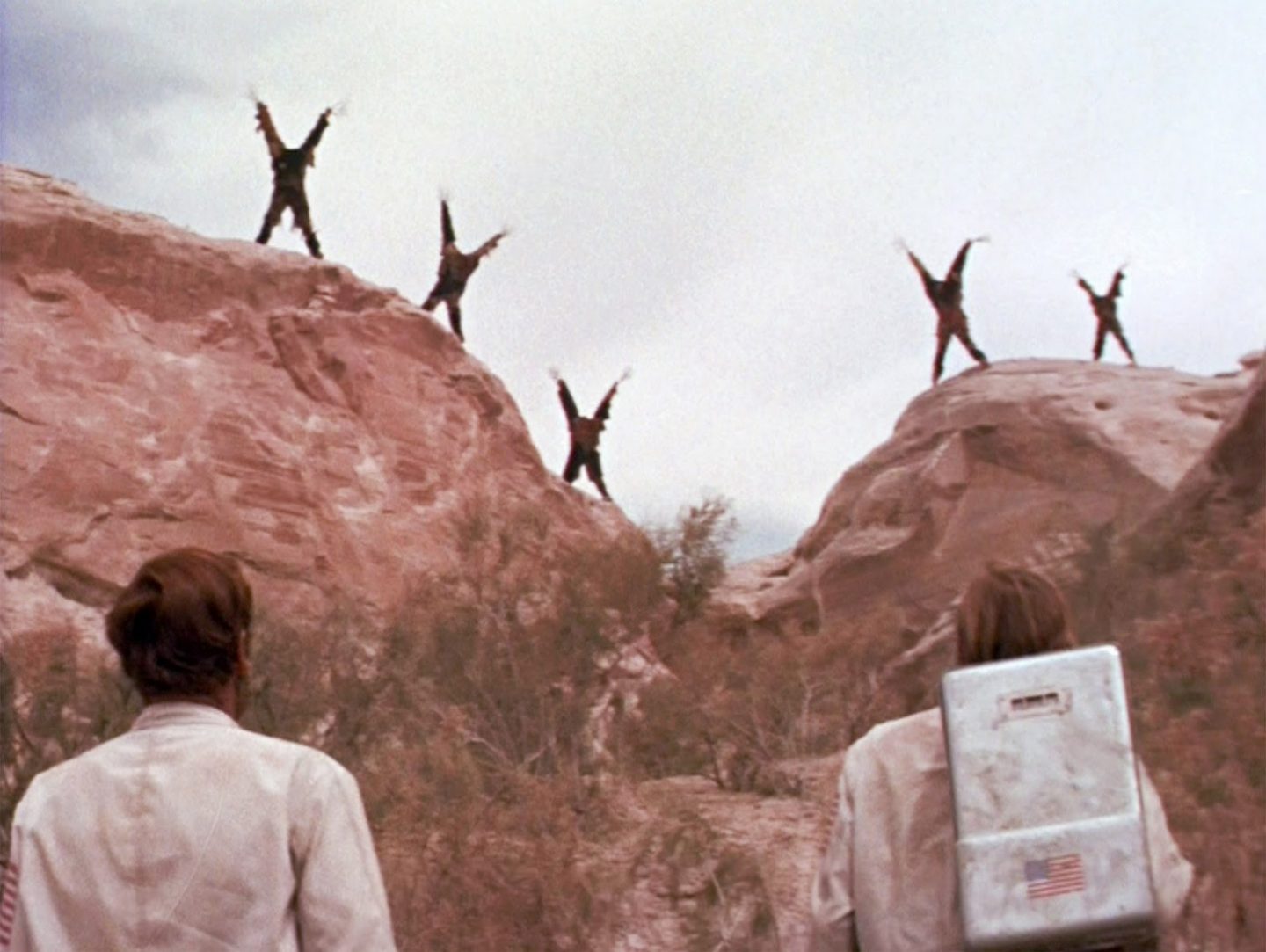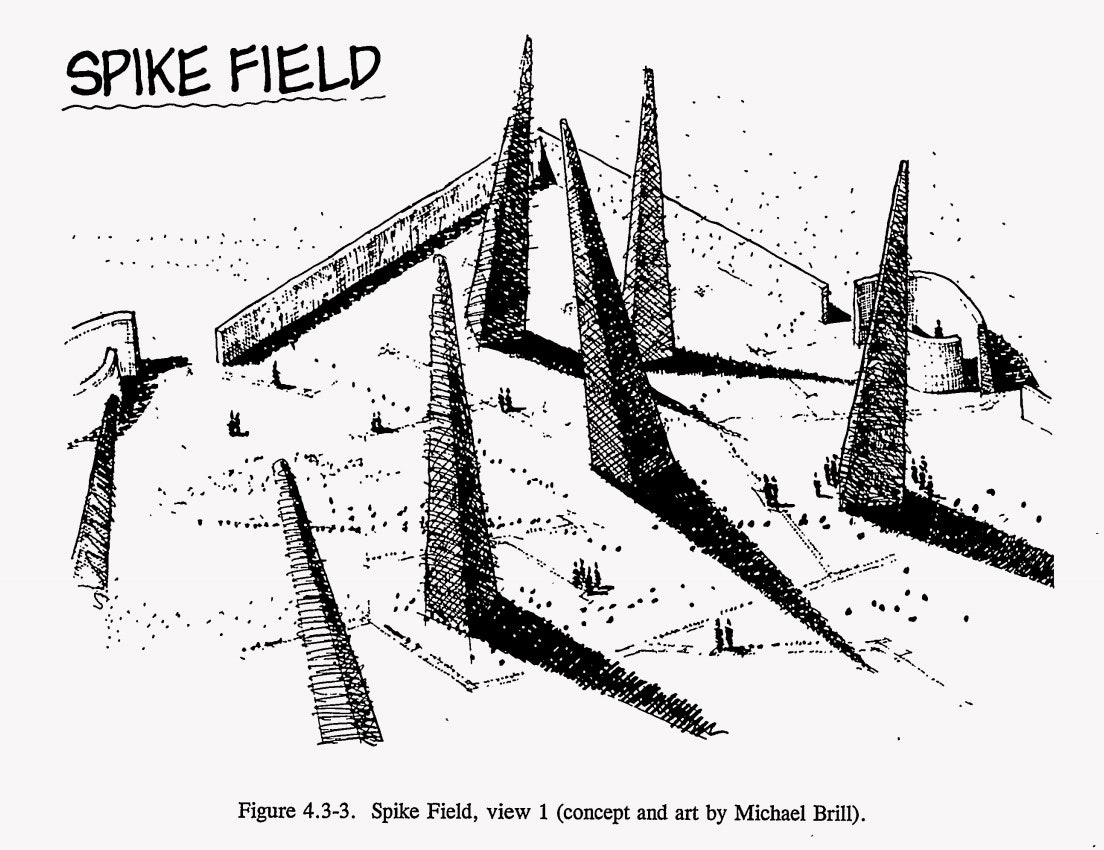Concept deterrent landmark from the 1993 Sandia labs report: “Expert judgment on markers to deter inadvertent human intrusion into the Waste Isolation Pilot Plant”
For his excellent new project, a newsletter titled THE MAGNET, Mark Frauenfelder — a research director at the Silicon Valley think tank Institute for the Future, editor-in-chief of Cool Tools, and founder of the popular website Boing Boing — recently asked me to describe how a semiotician might approach the problem of designing signage and other warnings that would encourage those in the far future (i.e., who may not understand today’s language or symbols) to steer clear of nuclear waste dumps that our era will have left behind.
This sort of question takes us into the territory of “iconicity” — that is to say, the ability of some meaning-bearing sign vehicles to elicit or provoke, at a preconscious level, a particular space-time interaction. As discussed, briefly, in this earlier post.
The Nov. 16 issue of THE MAGNET is now available. Here’s an excerpt in which I try to frame up an approach to answering this tricky question:
In order to help future-proof a brand’s visual identity, I normally recommend conducting a “diachronic” analysis of how the meaning of visual cues — from colors, shapes, type treatment, and use of white space to symbols, facial expressions, body language, etc, etc. — has evolved over time within a particular product/service category and/or cultural space. In other words, you can’t predict the future without studying the past. So I’d look at how symbols of danger, like the skull and crossbones, have evolved over time and try to understand the trajectory of that evolution. For example, do we find a shift over time from “cool” to “hot” colors, or from naturalistic to cartoonish design/illustration, or from an authoritative to a peer-to-peer tonality, say? Or has there been more of a see-sawing back and forth between two such binary opposites — and if so, in which direction are we headed next?
Frauenfelder invites his readers to weigh in with possible solutions to this conundrum — over which anthropologists, architects, materials scientists, astronomers, linguists, and archeologists have so far puzzled in vain.

Good luck! Our distant descendants are counting on us to get this right….


